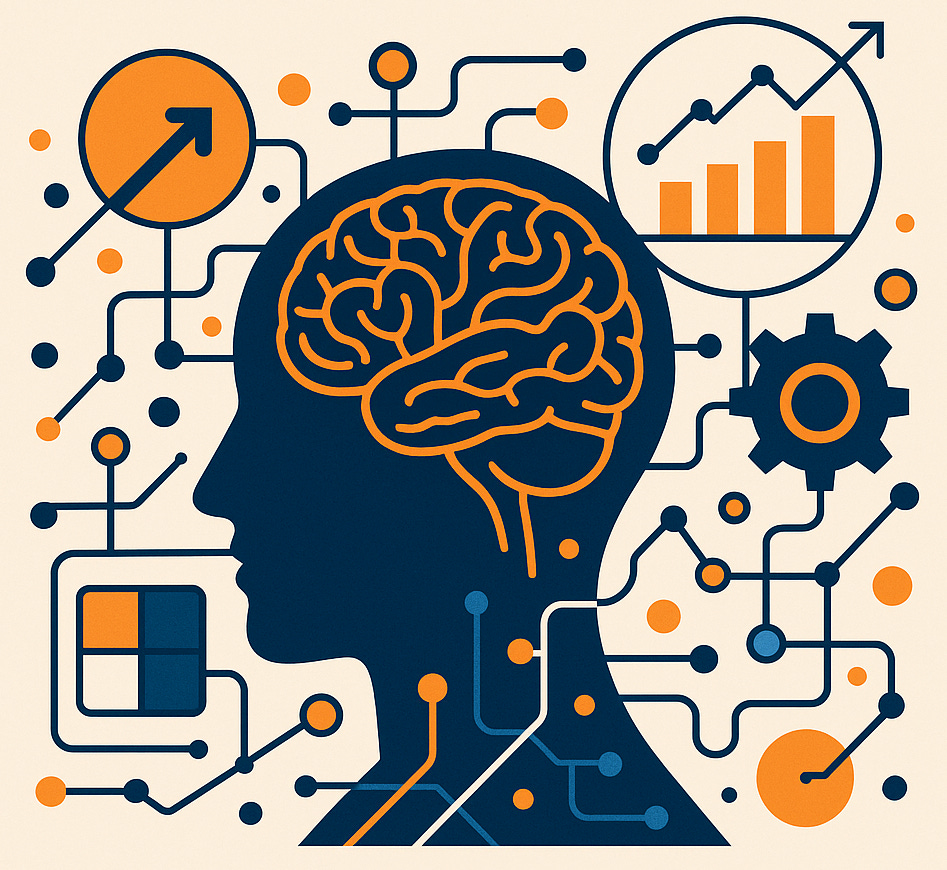When Growth Becomes the Enemy: The Neuroscience of Change Fatigue
Why “more, faster, now” backfires—and how next-gen leaders recalibrate for sustainable performance.
I invited my friend and colleague Nicolette Sulaiman to write a guest post for The Strategy Layer because her work in change management and adult learning gets to the heart of what drives real transformation — people. You can’t build performance or resilience without understanding and managing the human element.
I love how she connects neuroscience, learning, and leadership in this piece. I hope you enjoy it as much as I did — and be sure to follow her on LinkedIn (links below).
— Steve
In the Fall of 2019, the supply chain and logistics firm I’d worked at adopted a new proprietary system across the entire worldwide firm. Fast-forward to Spring of 2020 and I’m a subject matter expert converting my branch to the new system; designing and delivering trainings to enable learning of the new system, skill development and behavioral change. While determining what level of support and guidance each member of my branch required to successfully adopt the new system, I considered factors like exposure to the system, length of tenure and each employee’s duty to their book of business. I considered the employee’s relationship to the business. Hindsight is 2020, so in retrospect I would have considered the sheer impact of change—not just on the functional or emotional capacities of my colleagues—but the physiological impact that change has on the brain and our learning capabilities.
At this year’s Association of Chang Management Professionals (ACMP) Chicago conference co-author of Neuroscience for Change at Work, Tibisay Vera, introduced many of us to a neural experience called maladaptive plasticity. It’s the phenomenon of our brains’ protective adaptation to constant change which left unsupported can show up as burnout, cynicism, withdrawal, disengagement and resistance to the change at hand. Vera presented on the PEPE model, a supportive framework for handling change that considers the natural reactions of our brains under transition duress. Woven throughout Vera’s PEPE methodology is not just an understanding but an acceptance of our natural brain functionality under change. Understanding maladaptive plasticity and its symptoms is paramount for change practitioners—particularly adult learning enablers.
Learning a new skill or behavior is one of the most vulnerable experiences consistent across all of humanity. I’m not sure if there’s a person reading this that hasn’t felt the anxiety of absorbing new information—the hesitancy in one’s mind and body that manifests as mental rigidity and physical stiffness as we practice new ways of thinking and new movements. As a change practitioner, think critically about the pressure of change on top of the vulnerability of learning. Think about the symptoms of burnout, cynicism, withdrawal and consider the sheer amount of might and dedication a learner must apply to absorb new information despite their disengagement.
Last year, the Society for Human Resource Management (SHRM) reported that 44% percent of their 1000+ surveyed American employees are experiencing burnout. SHRM cited that workers experiencing burnout are three times more likely to be actively job searching and are significantly less likely to go above and beyond in the role where they’re experiencing the burnout symptoms. The repulsion from the environment that causes symptoms of maladaptive plasticity on top of the drive toward relief is enough to stifle any business’ growth and innovation. The insight that burnout is nearly half the workforce’s experience should be enough to alarm any executive leader into action. Afterall, organizations’ greatest assets are its people. Time and time again, I’ve heard and said that change management focuses on the people side of innovation. If we don’t consider the whole human, we are not doing our jobs.
Here’s what it looks like to lead learning while considering maladaptive plasticity through a transition:
Breaks in lessons are not spared.
Self-care during the transition, such as taking breaks for walks, are required and taken into consideration of employee performance.
Methodologies that incorporate support for individuals with ADHD, Autism, chronic anxiety and other neurodivergent experiences.
As a change practitioner, adult learning enabler, and, at my core, a person who learns differently, I think about accessibility of education through transitions. I apply a plethora of tactics to engage various learners and learning styles at once. My goals are simple: to be successful in the full realization of the benefits of the change. When we consider the impact of transitions on the brain and imbed specific support into lesson planning and strategic behavioral change, we approach learning enablement with equity. This is critical. It shouldn’t be an option to leave behind folks who are experiencing maladaptive plasticity or who learn differently. After all, that would be a willing submission to a subpar return on change investment. That simply won’t do.
Learning enablement isn’t whole without equity. We facilitate an equitable learning experience by:
Assessing how enterprise transitions uniquely impact various job functions.
Monitoring the symptoms of maladaptive plasticity in people and implementing symptom alleviation strategies.
As change practitioners and adult learning enablers, we must consider the whole human both internally (neurologically) and externally (how they experience the world.)
As change practitioners and adult learning enablers, we must consider the whole human both internally (neurologically) and externally (how they experience the world.) This is how we approach learning enablement with equity in mind under the stress of ever-present change. In a world where change is rapidly increasing; where unlimited growth is pined after and ultimately unsustainable, we need to take care of one another. As business leaders and chief executives, the holistic wellness of your business’ greatest asset (its people) cannot be overstated. Failure to administer preventative burnout care is an acceptance of subpar returns on innovations investments. Secure your investments by:
Factoring in maladaptive plasticity to enterprise change return and adoption rates
Level-setting shareholders’ expectations of investment returns considering the statistical facts of neurological impact of change on the brain
Resources
Are you ready to envision a growth strategy that not only accepts but makes the most of the human condition?
Learn more about maladaptive plasticity and the PEPE model.
Learn more about Tibisay Vera, MBA, MSc.
See the SHRM article Here’s How Bad Burnout Has Become at Work.
About Nicolette
Tomilola “Nic” Sulaiman is a Prosci Certified Change Practitioner that hails from Houston, TX who has spent the last eight years living and working in Chicago, IL. Nic earned her stripes doing change work across both public and private industries such as Mergers + Acquisitions, ERP implementations, Health Care IT, Financial Technology, Supply Chain/3PL Freight forwarding, and Food + Beverage. She’s cut her teeth as a change manager, adult learning enabler and communications strategist embedding diversity, equity and inclusion practices in her delivery. Nic is an active member of her small midwestern community, lover and proprietor of local art, and champion of radical self-love and community care.
Follow Nic on LinkedIn HERE




